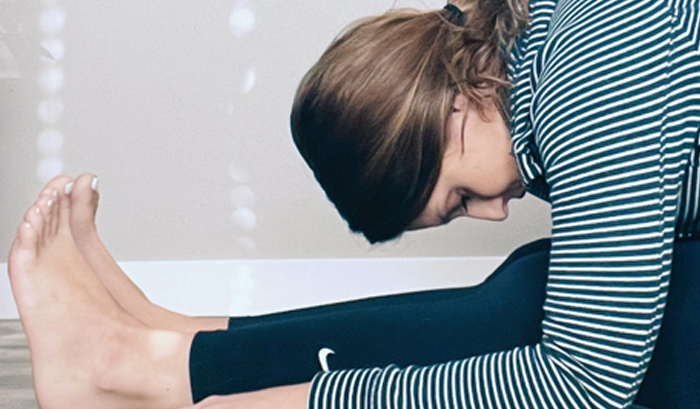
Adding more activity into your routine is especially important in our modern, often sedentary, culture. Fortunately, there are plenty of resources to suggest a more active routine and to track activity throughout the day. The items listed below are presented for informational purposes only and do not constitute medical advice or an endorsement.
Fitness Trackers
Tracking your workout used to mean writing down reps on a clip board. Then came fitness trackers that automatically recorded steps. Today’s fitness devices record much more, including blood pressure, pulse rate, blood oxygen, and even sleep health. The array of personal health information offers a new level of connection to our well-being, even as it raises serious privacy concerns. The Verge posted a list of its recommended fitness trackers, including:
Amazfit GTR 4
This watch/tracker monitors major functions and tracks your success in achieving the recommended 150-minutes of moderate activity each week.
Garmin Venu Sq 2
A familiar upgrade from the popular Fitbit, this tracker provides the basics plus GPS tracking for your walks and rides.
Oura Ring Gen 3
Don’t want to wear something on your wrist? The Oura Ring wraps similar tracking features around one finger.
Apple Watch
If you’re an IPhone user, an Apple Watch provides a compatible extension of tracking and monitoring functions. Note that the blood oxygen functionality has been disabled due to a patent dispute.
Samsung Galaxy Watch
For those in the Samsung ecosystem, this option provides both tracking functionality and access to workout videos through the Samsung Health app.
Garmin Forerunner 265
The granddaddy of smart watch makers, Garmin offers several models at various price points. The Forerunner 265 boasts functions and durability in an attractive shell.
Fitness Apps
When it comes to fitness, there’s more than one app for that. The choices are endless and many features are free though you can expect to pay $10-12/month for a full-featured app. PC Magazine helps narrow the field with their 2024 recommendations. Among them are:
Apple Fitness+
Apple’s Fitness app offers a membership program stocked with video workouts, from yoga to kickboxing.
Aaptiv
This audio-based workout is great for those who don’t want to fuss with a screen. Workouts are based on the information and goals you provide.
FitOn
This app lets you choose workouts based on time and intensity. Many of the workouts are free, and a monthly subscription provides meal plans and connectivity to a Fitbit or Garmin tracker.
Johnson & Johnson Official 7
This free app offers 7-minute workouts that you can fit into your workday routine.
Peloton
You know them for their stationary bikes and treadmills, but the Peloton app provides fitness routines even if you don’t have home equipment.
MyFitnessPal
This phone app will track your caloric intake and your movement. By understanding your current routine, the app can suggest ways to improve it.
Strava
This app turns your iPhone or Android into a fitness tracker using GPS and other data. It’s also a social networking app where you can recommend great walks or rides to friends.
Additional Reading
There are plenty of analog resources to understand the health benefits of moving more. The following books go beyond mere fitness or exercise workouts to explore the importance of movement to physical and mental well-being. Many are available through your local library.
Designed to Move: The Science-Backed Program to Fight Sitting Disease and Enjoy Lifelong Health by Joan Vernikos
With experience at NASA, writer Joan Vernikos notes that the human body was designed to work against gravity. The health impact of inactivity—bone density loss, premature aging, etc—are the same as those experienced by astronauts who spend months in a weightless environment.
Move Your DNA: Restore Your Health Through Natural Movement by Katy Bowman
Dr. Katy Bowman has authored several books on the mechanics and benefits of movement. This title makes the case that traditional exercise is just a small fraction of the movement we should be doing every day.
A Guide to Better Movement by Todd Hargrove
This book makes the connection between movement and the brain. Learn the characteristics of healthy movement and how the mind “maps” daily activities.
Move: How the New Science of Body Movement Can Set Your Mind Free by Caroline Williams
Williams makes the connection between how our bodies evolved to move and the negative impact of a sedentary lifestyle. Not only can sitting too long take a toll on physical health, but it can lead to anxiety, depression, and a diminished intelligence.
Built to Move: The Ten Essential Habits to Help You Move Freely and Live Fully by Kelly Starrett and Juliet Starrett
This New York Times bestseller digests physical fitness into ten ways to move better. The authors apply techniques used by professional athletes and the military to work movement into daily life.
If you have any questions or concerns about your fitness, discuss them with your Kinwell clinician. Schedule an appointment through your MyChart app or by calling 833-411-5469. Learn more at KinwellHealth.com.


